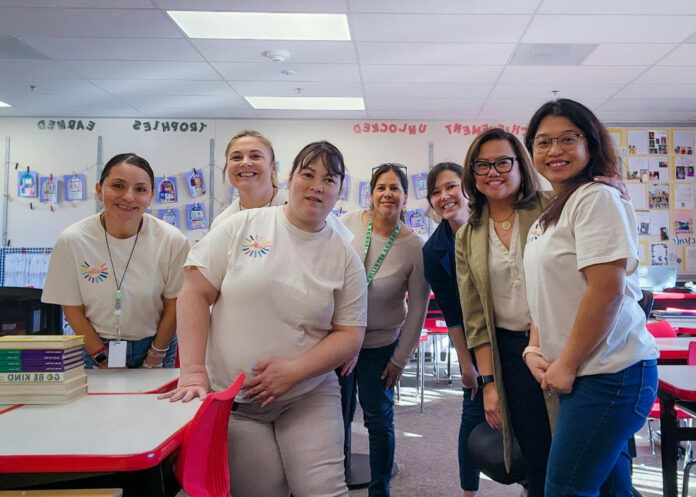
The Hollister School District has made significant strides with inclusiveness in special education and recently received recognition for those efforts.
The district was awarded this past year from the Supporting Inclusive Practices (SIP) organization with the Bridgett Ealy Heart of Inclusion award. The organization noted the district’s successful launching of a co-teaching model three years ago, leading to improved results for special education and general education students.
The co-teaching model involves instruction to general education and special education students—with two teachers—in the same classroom. The Hollister School District uses the model on five of nine campuses and would like to expand to the other schools as well, administrators said. There were 28 co-teachers this past school year, said Colleen Myers, Ed.D, director of educational services for the district.
“The special education students feel like I belong. I can be successful in this classroom,” said Myers, who added Hollister High School follows a similar approach. “Then on the general education side, it really builds up the empathy and socialization skills of all students.”
This dynamic has coincided with special education and general education students outperforming their respective academic trends, Myers said.
Myers noted an additional benefit of the SIP award—a grant received by the district that is used to purchase incentives for teachers such as upgraded chromebooks and two paid days for new teachers to learn about co-teaching.
From an administration side, Myers has been working on the co-teaching model with Gabriel Gutierrez, Ph.D., the district’s director of special education. He mentioned the district’s focus with co-teaching has been at the middle school level, but the hope is to expand to Calaveras/Accelerated Achievement Academy, the Hollister Dual Language Academy and Sunnyslope School as well.
Determining a special education student’s path comes back to the Individualized Education Plan (IEP) process. Each special education student follows an IEP, he underscored.
“The goal is for students to be included with their general education peers,” Gutierrez said. “Yes, they have an IEP, but they’re general education students first with a layer of identified support.”
He said the district always strives to make sure students have the least restrictive environment possible. The district’s IEP team analyzes data to determine whether co-teaching is the best situation for a particular student because the model may be challenging for someone with more significant needs. For those who do take part in co-teaching, the results have been promising, he said.
“The preliminary data we have suggest that students with IEPs who are involved with co-teaching have made substantial progress toward mathematics and English,” he said.
Like Myers, Gutierrez also stressed that co-teaching has a profound impact on general education students as well, while students benefit from having two teachers instead of one.
“When it works out well, it’s a symbiotic relationship,” he said.
An important part of the process has been gathering input from teachers along the way, he said.
“We’re thankful to the teachers for their continued work in learning and implementing and providing feedback, so that we can improve our development of inclusive practices across the board,” he said.









